Voice of Country
Country has always had a voice – and always had carers. Let’s grow a culture where more Australians listen, learn and unite together as shared custodians of this land.
Our Work | Voice of Country | Photo: Justin McManus
When Country is healthy, it speaks – in the rustling of leaves, the calls of native birds and the flow of clean rivers.
This ancient voice, long honoured by First Nations peoples, is now harder to hear – drowned out by the noise of environmental destruction. But it still calls to us. And it’s calling louder than ever.
Since colonisation, we’ve lost more than 100 unique native species – gone forever. And with every extinction, we also lose irreplaceable ecological knowledge and cultural practices rooted in tens of thousands of years of care.
Invasive species are one of the biggest drivers of this damage. They’re wiping out plants and animals found nowhere else on Earth and eroding the deep connections between First Nations peoples and the places they’ve cared for over countless generations.
Country is crying out. If we truly listened, we’d hear the call to slow invasive species and build a culture that listens, connects and cares for it.
“A Voice of Country is basically that, giving our soil, our water and our species, their voice because they actually haven’t had a voice for 235 years.”
Richard Swain, Indigenous Ambassador for the Invasive Species Council and Voice of Country campaign lead.
Invasive species don’t just harm wildlife. They threaten food sources, bush medicines, sacred sites and totem species. The cultural cost is profound – and often invisible to policymakers.
First Nations rangers are on the ground, doing vital work to protect Country. But too often, they’re excluded from decisions about funding, policy and priorities. That must change.
The Voice of Country campaign works to change that – by elevating Indigenous voices, restoring the voice of the land itself and calling for bold reform.
We’re bringing together a growing chorus of First Nations leaders with deep knowledge of Country and care. By listening to these voices – and combining Indigenous knowledge with the best of modern science – we can reverse extinctions and begin to heal the land.
We are calling for a federal Indigenous Caring for Country Commissioner – an independent advocate who will:
- Bridge the gap between First Nations grassroots environmental movements, rangers, land managers and decision-makers.
- Be a public advocate for maintaining connection to Country and the impacts of invasive species on First Nations communities.
- Ensure resourcing, coordination and government support required to effectively manage invasive species on Aboriginal land.
We have a choice. We can make this the decade of healing – or the decade of saying goodbye. It’s time to listen to the Voice of Country.
Voice of Country Pledge
In taking this pledge you commit to listening to Voice of Country – and take responsibility for protecting our ancient rivers, diverse landscapes and unique species from invasive species.
Aboriginal and Torres Strait Islander leaders and organisations — add your name to our call for a Commissioner for Country.
If your Indigenous-led organisation wants to be part of this collective and powerful voice on managing Country, reach out to Richard Swain, Voice of Country Project Lead.
Contact Richard






